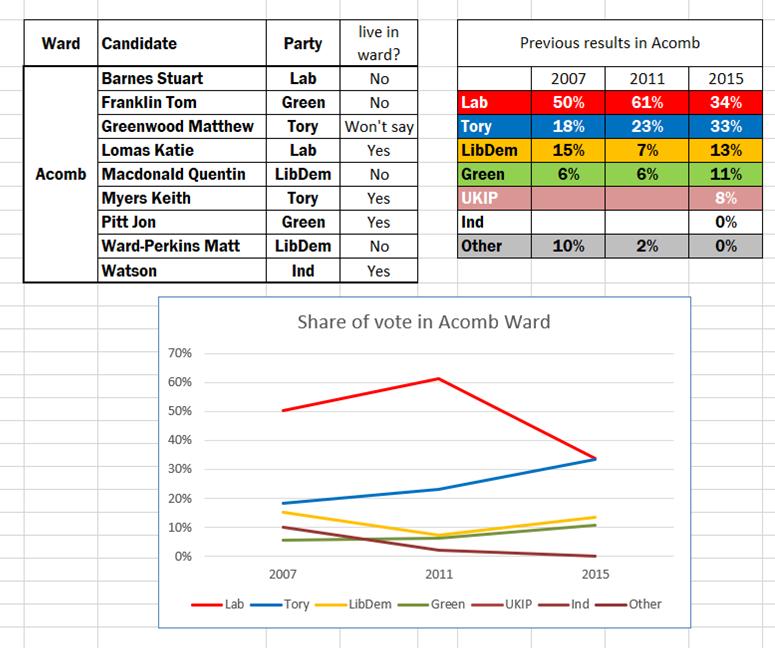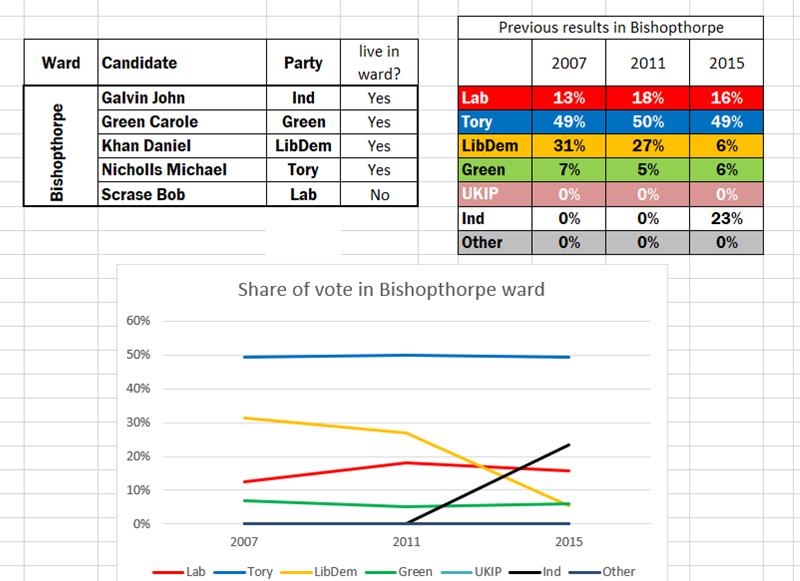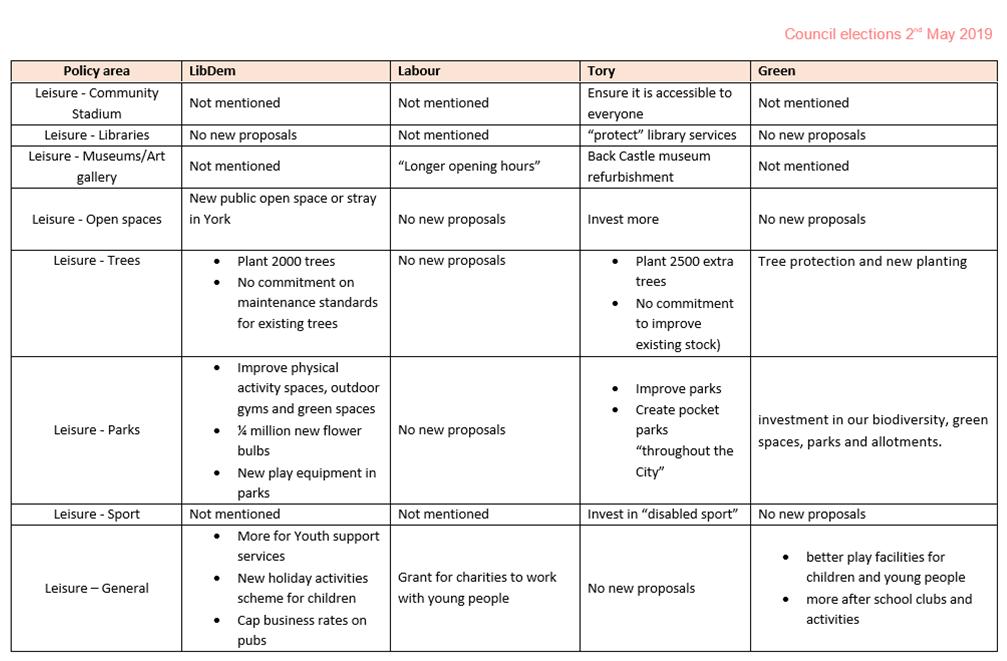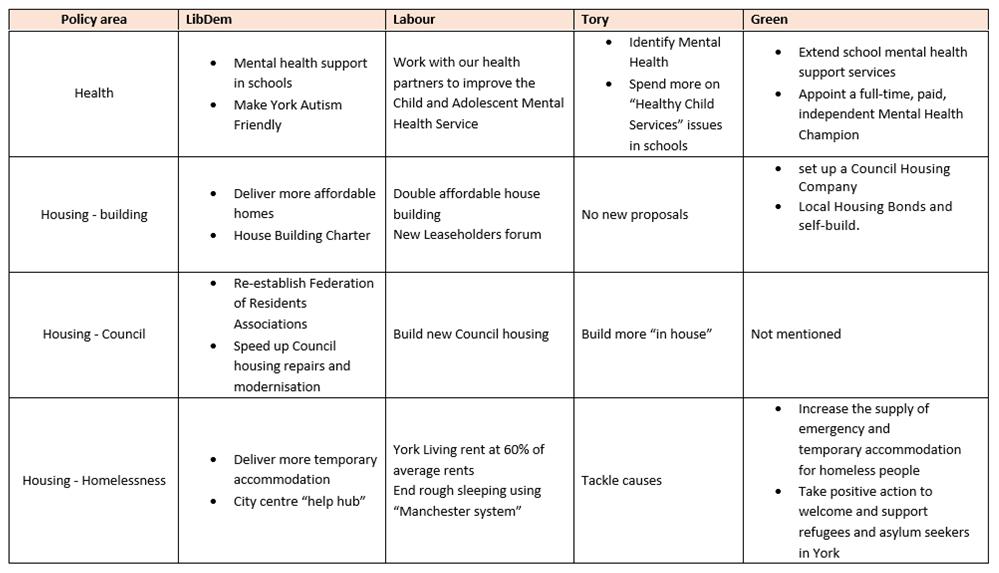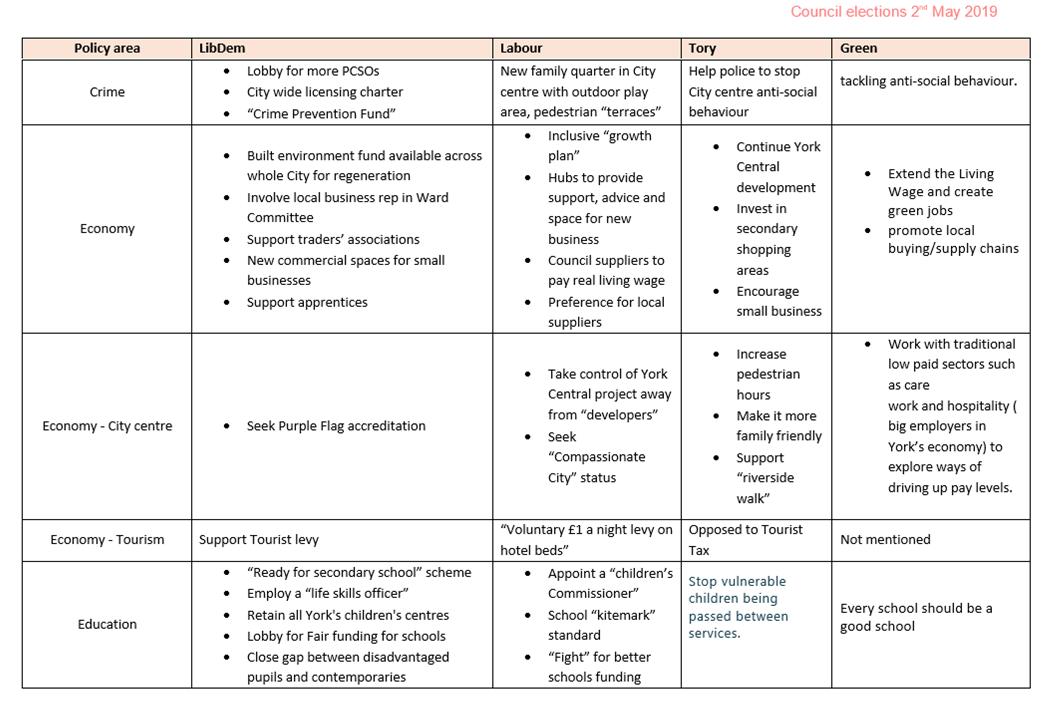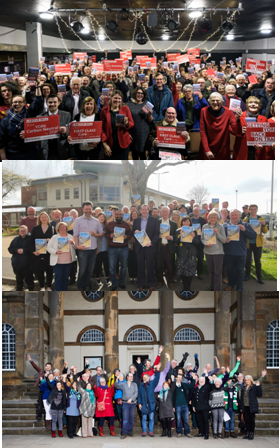Clifton & Copmanthorpe reviewed
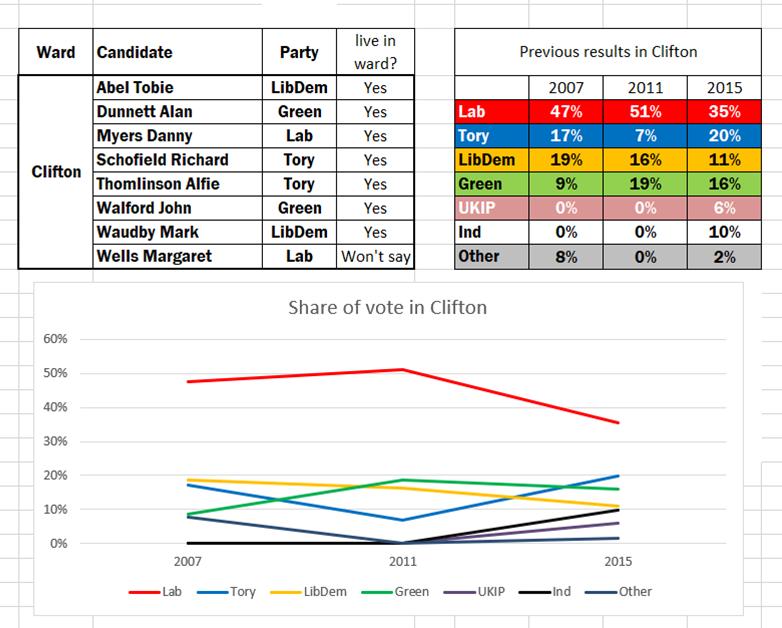
Clifton is home to 10,007 residents. Average incomes are lower than the City average. 51% of residents own their home. 744 people are Council tenants. 1.7% are out of work. Crime levels are above average. 85.7% of residents are satisfied with their local area as a place to live (York average 86.8%). 31.6% believe that they can influence decisions in their local area (City average 25.7). Source
Elections
The 2015 elections were held on the same day as a General Election. Hence the turnout was almost double the number usually voting at a Council poll. Voting patterns did not mirror the General Election result particularly in the York Central Constituency where Labour had a big parliamentary vote but, following a poor performance when in control of the Council, found ballot box support collapsing. A reduced turnout is expected on 2nd May.
Labour have won the Clifton ward for a number of elections. It is as long ago as the 1980s that the Tories last seriously challenged in the area.
In 2015 two former Labour Councillors (David Scott and Ken King) stood in the ward as Independents. They had quit the Labour group in response to a number of calamitous decisions taken by the then party leadership. There was a considerable fall in Labour support although they held on to both seats. Neither of the former Councillors are standing this time.
Both the current Labour Councillors work for MP Rachel Maskell. One chooses not say if she lives in the area.
None of the opposition parties have established themselves as the natural alternative to Labour so it looks like there will be no change.
Prediction
2 Labour seats
Copmanthorpe
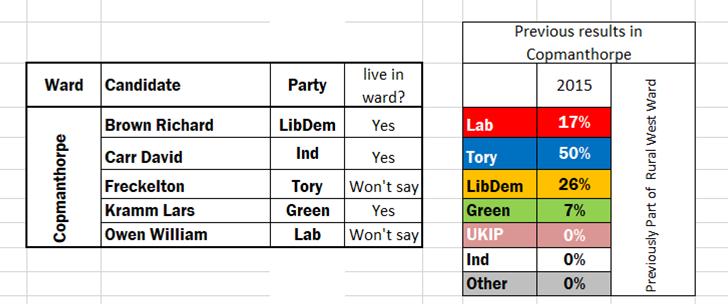
The Copmanthorpe ward is home to 4115 residents. It was split from the Rural West Ward as recently as 2015. Average incomes are higher than the City average. 87% of residents own their home. 1.4% are out of work. Crime levels are below average. 92.8% of residents are satisfied with their local area as a place to live (York average 86.8%). 28.6% believe that they can influence decisions in their local area (City average 25.7). Source
Elections
The 2015 elections were held on the same day as a General Election. Hence the turnout was almost double the number usually voting at a Council election. Voting patterns did not mirror the General Election result but, following a poor performance when in control of the Council, Labour found ballot box support collapsing. A lower turnout is expected on 2nd May.
This is another seat where a former Tory Councillor is standing as an Independent. David Carr was actually the Leader of the Council when, following an ill judged attempt to smear two of his LibDem coalition partners with what turned out to be bogus allegations, he was forced by his colleagues to quit.
As a well known Parish Councillor David Carr may fancy his chances of success.
He is opposed by a Tory who has been “parachuted” into the area from another part of York.
The LibDems have a well known local candidate (Richard Brown) who came second in 2015. It is unclear how effective Richard Browns campaign has been but if the Tory vote splits then he might be the beneficiary.
Another former Councillor, the Green party’s Lars Kramm who currently sits for Micklegate, is also contesting the election. He has recently moved into Copmanthorpe Ward..
This is a difficult result t to predict but if the expected Tory vote meltdown occurs then the LibDems could be the winners
Prediction
1 LibDem seat

